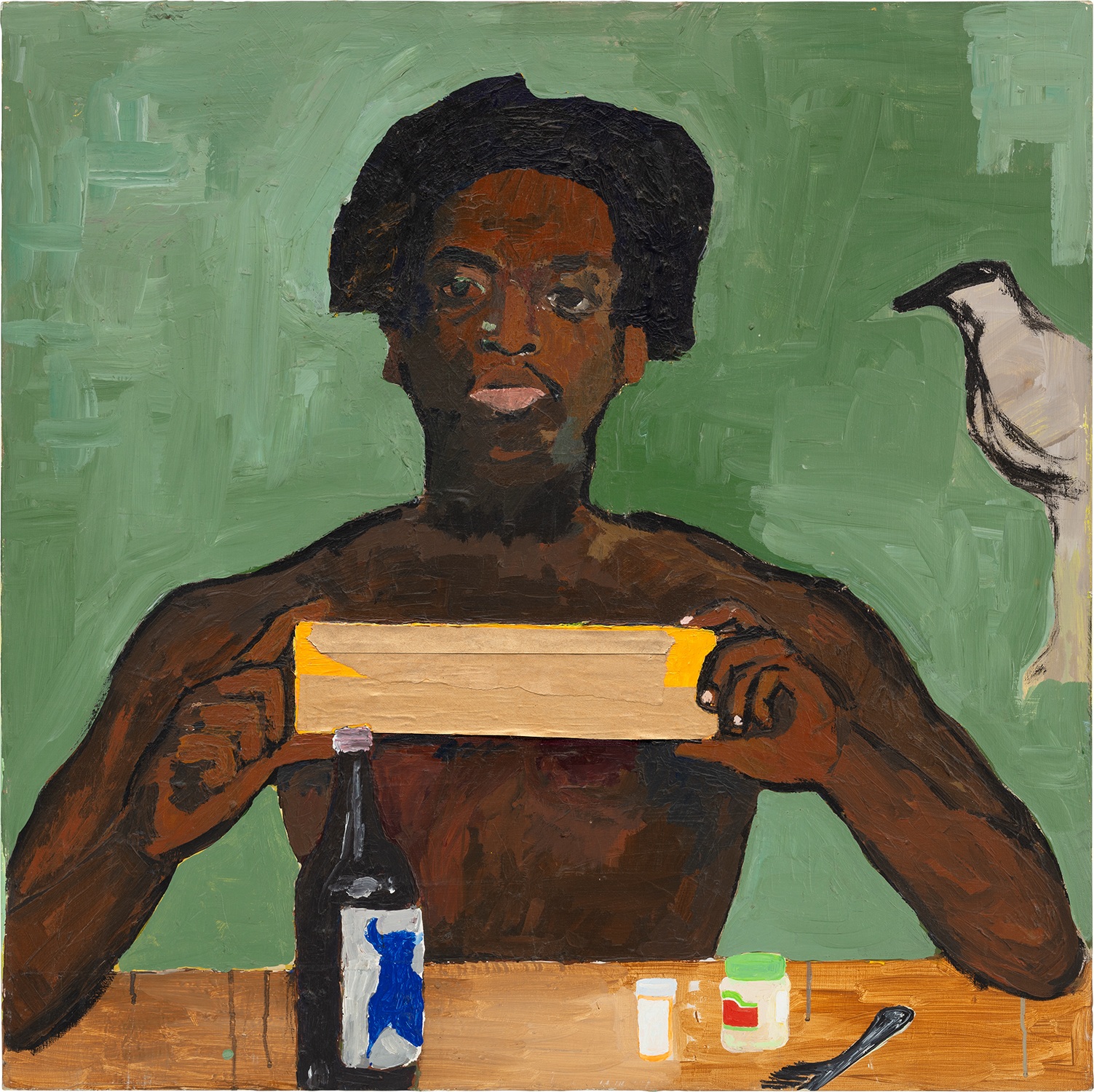

60
Henry Taylor
Government Cheese
later signed and inscribed "BEEN EATING CHEESE 2 LONG Henry Taylor 07.28.07 BEEN THREW A LOT." on the reverse
acrylic and collage on canvas
36 x 36 in. (91.4 x 91.4 cm)
Executed in 2003.